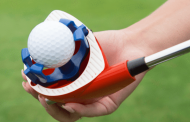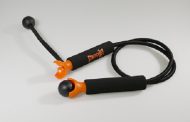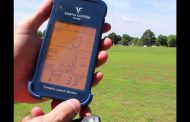There cannot be many more frustrating moments on the golf course, than hitting a sweet drive, down the middle of the fairway, to then find your ball is nestling in a divot. Having walked up the fairway, imaging how you were going to approach the green and the great birdie opportunity which awaits, you are now faced with a completely different shot, in an unpredictable lie.
The first thing to take in to consideration, is he flight of the ball, which will be much lower than a standard fairway shot. This is because the ball is lower than the level of the ground and it will not be possible to get the club on the back or under the ball, in the same way you would if the ball was sitting nicely on the fairway. Therefore, the ball is going to fly lower. In an attempt to compensate for this, the first thing you need to do, is select a higher club, than normally would be the case for this distance.
Probably the best way to think about this shot, is to imagine extending the divot and making it bigger, even twice the size it is currently. This will encourage you to drive the club into the ground, which is the best way to hit the ball when it is in a divot.
To achieve this, the ball needs to be back in your stance and your hands and head need to be in-front of the ball. This is true at both set-up and impact. By being in this position, it will help to drive the club down and into the ball, thus digging it out of the divot and into the air.
Due to the set-up and nature of the swing for this shot, a follow through will not be required. Therefore, this shot is going to look much like a punch shot, with a very short follow through, the shorter the better. By eliminating the follow through, you will keep your hands and weight above the ball and this will help to drive the ball out of the divot.
Perhaps the best way to practice this, is to go to a local sports field, where there are sure to be plenty of divots to place the ball in and practice escaping from, using the technique above.






































